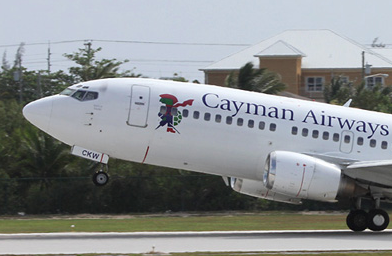Message from the Cayman Airways President & CEO on the B737-8 fleet’s “Return To Service”

I’m Fabian Whorms, President and Chief Executive Officer for Cayman Airways and its subsidiary Cayman Airways Express.
My career in aviation started in 1983 in the maintenance and engineering field. In 1995 I joined Cayman Airways, and in 2009 I became the President and CEO of Cayman Airways. Right throughout my career in aviation, my number one priority has always been safety. There’s a certain role that resides with my duties which is known as the Accountable Manager. This is a regulatory term and what it means is that I am accountable to the aviation authorities, in general, for the safety and security of the airline’s operation. There is nothing that I, or our team, here at Cayman Airways places above that. The commercial performance of Cayman Airways is obviously very important, but it’s definitely in second place.
Every single flight that we operate, if there’s an issue, no matter how small it is, we make sure we address it before that flight is dispatched. It’s what we do day in, day out. At this point we are working to reintroduce our aircraft back into service and we are doing it with the same care, caution and diligence that we exercised on March 10, 2019. We’re leaving nothing to chance. Airlines, typically, have been focused on pilot training. In that respect I can tell you we went over and above, from day one, before we even introduced the aircraft to service in the first instance. What was unusual for Cayman Airways is that we trained all our pilots with the full simulator training, as if they had never flown this aircraft before. What typically happened in the industry is that pilots would receive differences training, by way of a computer-based application. Generally speaking, it was done on an iPad.
One of the things we have done over and above other airlines, is that before we introduced this aircraft into service, we specifically requested that Boeing develop a curriculum and provide us with the training for our maintenance personnel on the MCAS system, so that we’re thoroughly familiar with how the system works and have the ability to rectify any issues that may arise with the system in the future, before an aircraft is dispatched. To this end, we have already completed this training, and we have now been advised by Boeing that they’re now going to offer this training to other airlines because it’s such a good idea. This to me is an example of Cayman Airways leaving no stone unturned, and going above and beyond.
There’s several of these aircraft now flying for the last two months since the FAA originally ungrounded the aircraft. All the pilots flying these aircraft now, for other airlines, went straight from the newly prescribed simulator training into the cockpit and conducted revenue flights with passengers. What we are doing is, again, over and above. Our pilots have not flown the airplane for 23 months. The simulator is a wonderful tool. It replicates the operation of the aircraft in every respect, but it is not the aircraft. We are going to have all of our pilots do a series of touch and goes, to be sure that there’s no discomfort with the feel of the aircraft when they get into this cockpit with our paying revenue passengers.
As we approach the point now where we will be returning this aircraft to service, I’m doing it with no reservation or hesitation. I had no reservations or hesitations to withdraw the aircraft from service in March of 2019, and it is with that same diligence, and knowing full well what has gone into recertifying this aircraft and making it safe, that I’m now confident that the aircraft is fit to be returned to service.
Trust me, if I did not feel this way, we would be happy to have this aircraft sit until we get to that point where we feel that way. I have no reservations or hesitations as well in flying on this aircraft myself or in having my family, my loved ones, my friends, fly on this aircraft. It is definitely as safe as you can get.




